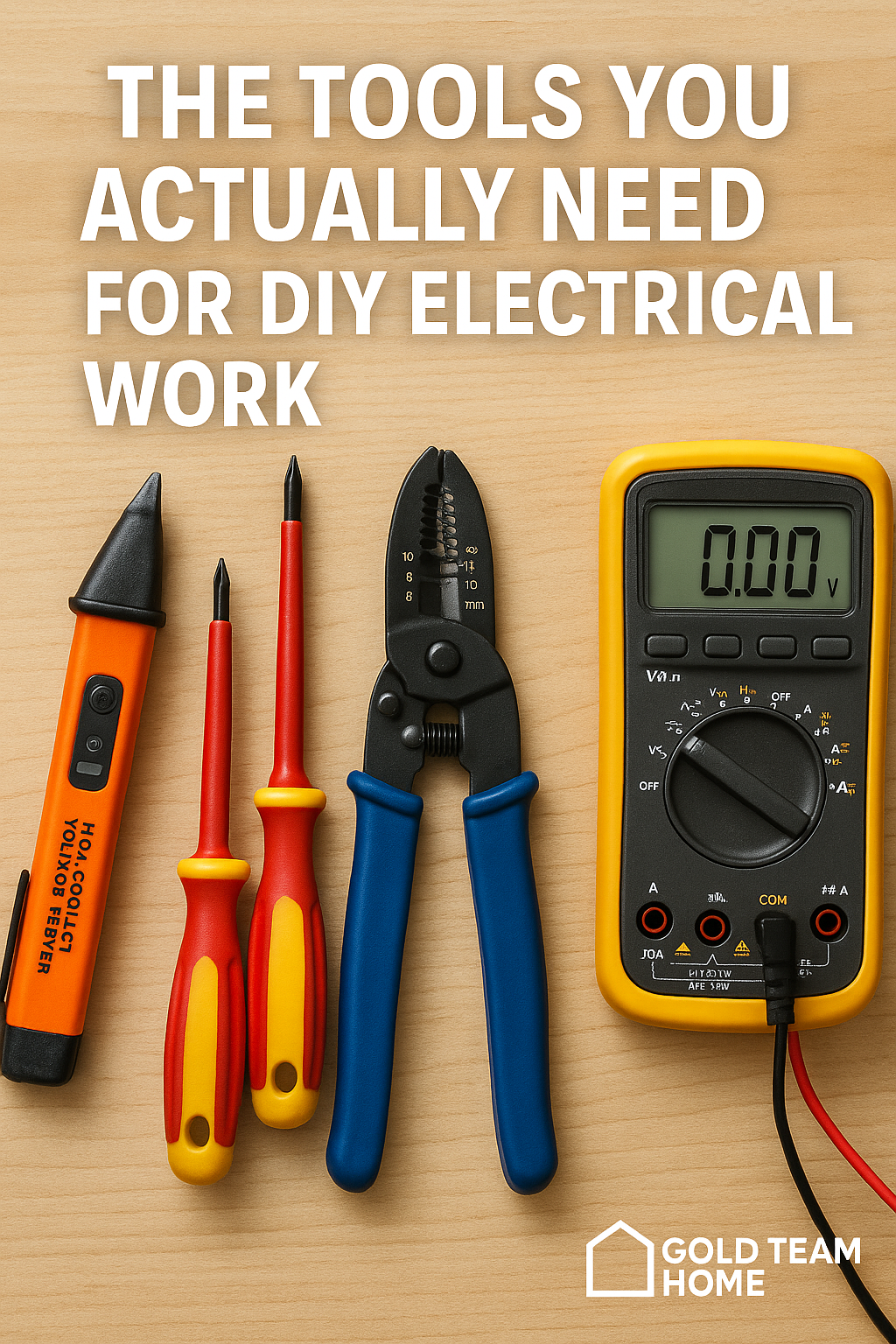New! DIY Project Planner. Plan smarter, skip the spreadsheets. Start Your Free Trial Today →

Real gear that makes small wiring projects safer, faster, and way less stressful.
If you’ve ever stood there staring at a light switch box, second-guessing whether the power’s actually off… or wondered why your new outlet won’t work even though you “wired it the same way” this post is for you.
You don’t need to be an electrician to do safe, clean electrical work. But you do need to know which tools make the job easier and which rookie mistakes to avoid.
This post contains affiliate links… at no extra cost to you. It helps us keep the DIY guides free and the lights on over here at Gold Team Home. Thanks for the support.
Why you need it:
This should be in your hand before you unscrew anything. A non-contact tester tells you instantly if a wire or outlet is live without touching bare metal.
What it fixes:
The “I thought I turned off the breaker” moment that sends you reeling backward with a spark in your hand.
Pro tip:
Make it a habit: test before and after flipping breakers. You’ll be shocked how often a box is still hot.
Why you need it:
Using a utility knife or cheap combo tool can slice too deep, damaging the copper or not deep enough, leaving insulation behind. A real pair of strippers gets you a clean pull in one go.
What it fixes:
Loose wire nuts, flickering lights, and maddening “why won’t it connect?” situations caused by bad wire prep.
Avoid this:
Don’t buy the multi-tool strippers with six jobs in one. They usually do none of them well.
Why you need it:
It’s easy to forget that even metal screws can conduct current. Insulated screwdrivers protect you when you’re working near terminals especially inside junction boxes or switch housings.
What it fixes:
Accidental arcing, surprise zaps, and fried screwdrivers from touching both terminals at once (ask us how we know).
Why you need it:
A voltage tester tells you if power is present. A multimeter tells you how much, where it’s going, and if a wire is broken. Super handy when you’re tracing a dead outlet or figuring out why a light won’t turn on.
What it fixes:
Endless guesswork. Instead of replacing parts at random, you’ll actually know what’s wrong.
Beginner note:
Not required for basic installs but once you start troubleshooting, you’ll wish you had it.
Why you need it:
If you’re running cable from one box to another especially through finished drywall this makes it 100x easier. Feed it through, tape the wire on, pull it back.
What it fixes:
That awkward moment when you try to “shove the wire through” and it immediately snags or disappears into the abyss behind the wall.
Trim copper ground wires, zip ties, or soft cable cleanly especially in tight spaces.
Way easier than twist-on wire nuts for beginners. Just strip, insert, flip the lever,done.
Plug it in and instantly know if your wiring is correct — open ground, reversed polarity, etc. Also tests GFCI resets.
Flexible, durable, and won’t peel off or turn gummy after a few months. Worth the upgrade.
These aren’t just beginner missteps, they’re the stuff that causes fires, shocks, or expensive rework.
If you’d rather grab a full setup in one shot, here are two solid starter kits:
Try one of these beginner-safe electrical projects on your own:
These guides show you exactly how to use the tools above safely and confidently.
If you take one thing from this post, it’s this: test everything, strip cleanly, connect tightly. That’s what keeps your lights on and your fingers safe.
You don’t need to be an electrician to do basic electrical work, but you do need to respect it. These tools help you do exactly that.
Send this to someone who’s about to change a light switch without flipping the breaker.